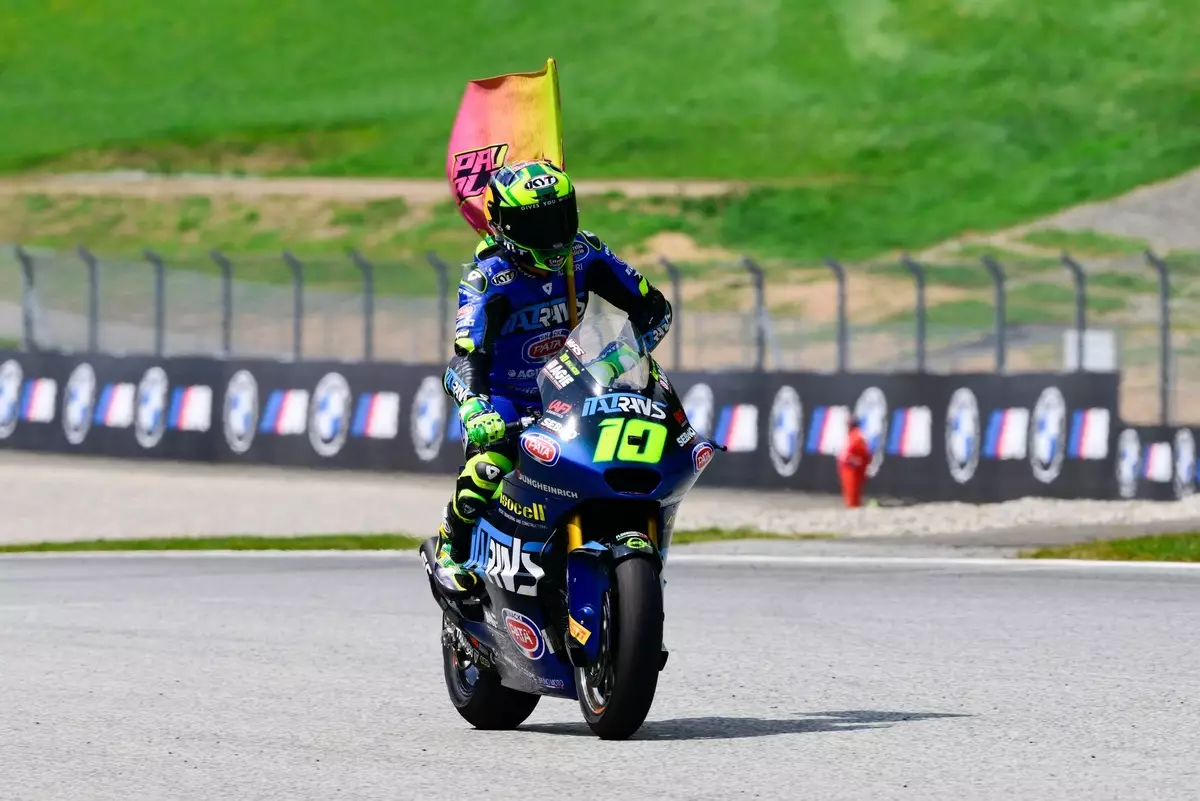The imminent transition of Diogo Moreira from Moto2 to MotoGP signals a significant turning point in the sport’s landscape. At just 21 years old, Moreira’s ascent underscores the relentless pursuit of excellence driven by talent rather than tradition. His move to Honda’s LCR team does more than fill a vacant seat; it invigorates the entire paddock with fresh energy and hope. In an era where many riders are content to stay within familiar confines, Moreira’s leap forward asserts that ambition and performance can reshape long-standing narratives.
This development isn’t merely about a young rider getting a promotion; it embodies the sport’s dynamic shift towards embracing diversity and recognizing raw talent regardless of nationality or background. The breaking down of barriers—historically, a predominantly European affair—stands out as one of the most compelling aspects of Moreira’s impending debut. His participation is a testament that in MotoGP, skill and determination outweigh stereotypes or preconceived notions. It’s a powerful statement that, with the right opportunity, riders from South America can once again make a meaningful impact on this elite stage.
Implications of the Move on the Team and Sponsorship Landscape
Moreira’s leap into the premier class will undoubtedly shake up the team dynamics. The departure of Somkiat Chantra not only marks a shift in rider personnel but also signifies a transition in commercial interests. Idemitsu’s withdrawal as team sponsor exemplifies how rider changes ripple through the business fabric of MotoGP—affecting sponsorships, marketing strategies, and regional market engagement. For Honda and LCR, this transition opens doors to tap into the burgeoning Brazilian market, aligning them with a passionate new fanbase eager to see a compatriot compete at the highest level.
Interestingly, Moreira’s statements dismiss the notion that nationality plays a decisive role in his career advancements. His focus remains on performance, reflecting a mature understanding that success in MotoGP stems from relentless dedication rather than identity politics. Yet, in the broader picture, sporting narratives are often intertwined with national pride, and Moreira’s presence surely revitalizes South American interest in MotoGP, reminiscent of the days when icons like Alex Barros thrilled local fans decades ago.
Strategic Moves and the Road Ahead for Honda and Emerging Talent
The negotiations surrounding Moreira’s move highlight the strategic foresight of Honda, aiming for long-term dominance in a changing technical landscape. Their proposal of a multi-year contract, especially with the upcoming regulation overhaul, indicates a calculated investment in grooming a future world champion. By positioning Moreira as a key player for 2027’s new 850cc machines, Honda demonstrates a commitment that transcends immediate results; it’s about shaping a rider capable of thriving in the sport’s next phase.
This move also influences other team decisions. Jack Miller’s supposed extension with Yamaha and Pramac’s lineup considerations suggest a shifting power balance. While Oliveira’s injury setbacks cast uncertainty on his future, Miller’s stability could be reinforced, highlighting how individual performances directly influence team strategies and rider contracts. This intricate web of negotiations underpins the delicate ecosystem of MotoGP, where every move has the potential to alter the championship landscape significantly.
Beyond the Track: Cultural Impacts and Future Prospects
Moreira’s entry into MotoGP is a cultural milestone. South America has historically been a fertile ground for motorcycle talent, yet the continent’s representation in the premier class has been sparse in recent years. His arrival redresses this imbalance, rekindling hopes among fans longing for local heroes who can transcend regional barriers to compete globally. The re-emergence of South American riders excites not only fans but also sponsors and manufacturers eager to tap into new markets.
Looking ahead, Moreira’s journey is poised to inspire a new generation of riders motivated by the promise of international recognition. His career trajectory challenges the entrenched norms and underscores that perseverance, talent, and strategic opportunity can open doors previously thought closed. As MotoGP continues evolving, athletes like Moreira serve as catalysts—not merely for their teams, but for the sport’s broader evolution towards inclusivity and global appeal.
In essence, Moreira’s anticipated debut isn’t just a career milestone; it’s a declaration that the future of MotoGP belongs to those willing to challenge conventions and push boundaries. His rise exemplifies the sport’s core spirit: relentless pursuit of excellence, breaking stereotypes, and embracing new talent to drive the sport forward into uncharted territories of innovation and excitement.


Leave a Reply